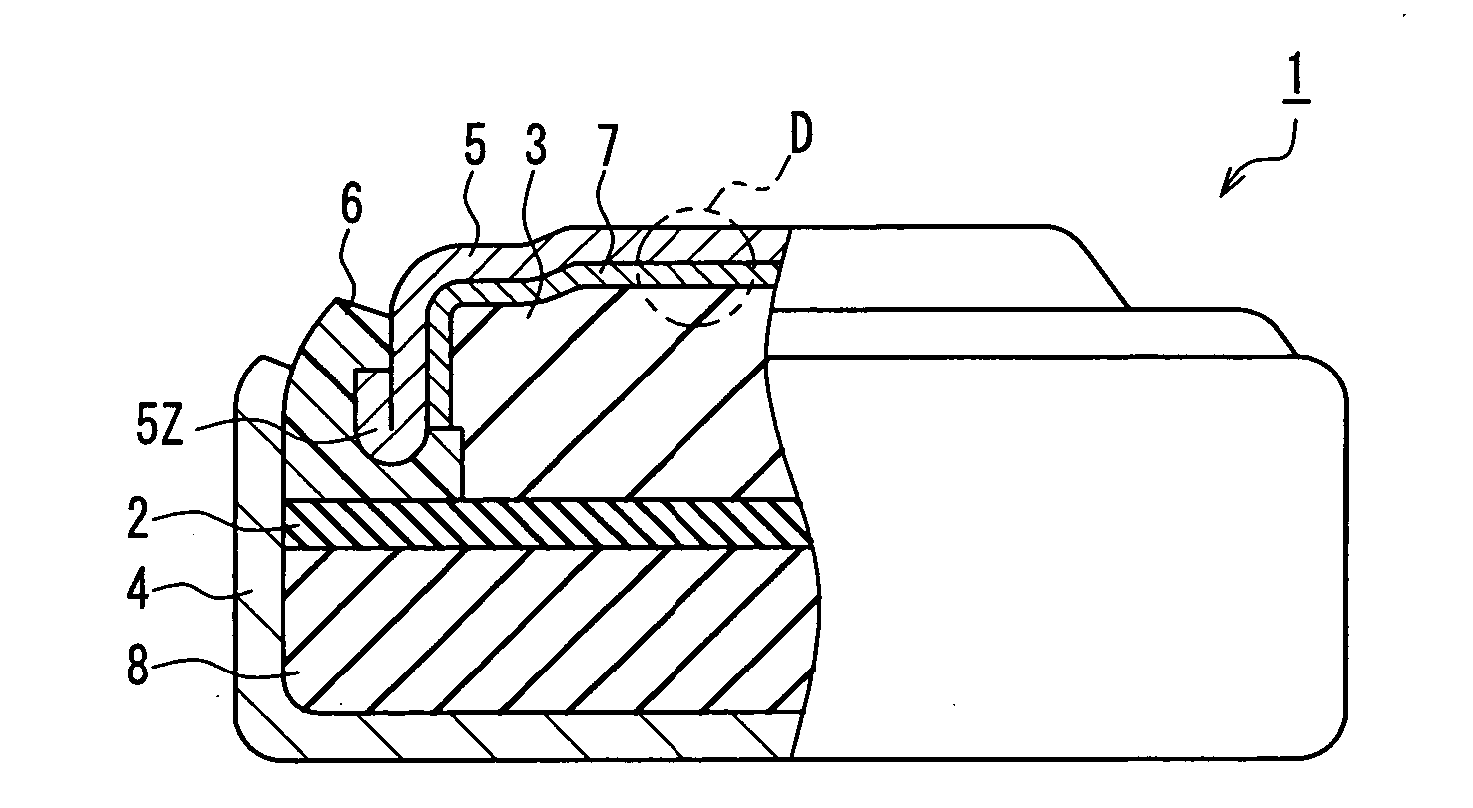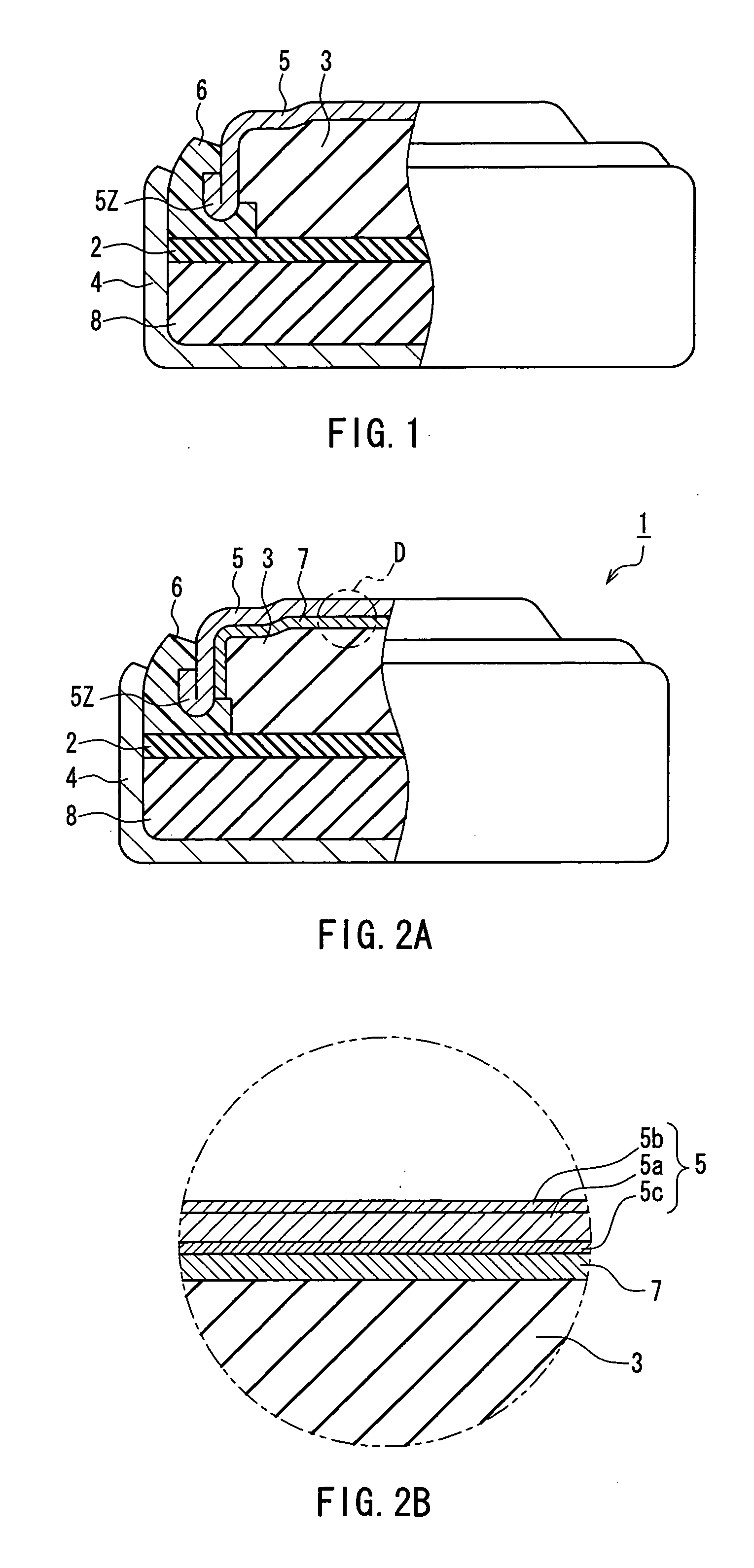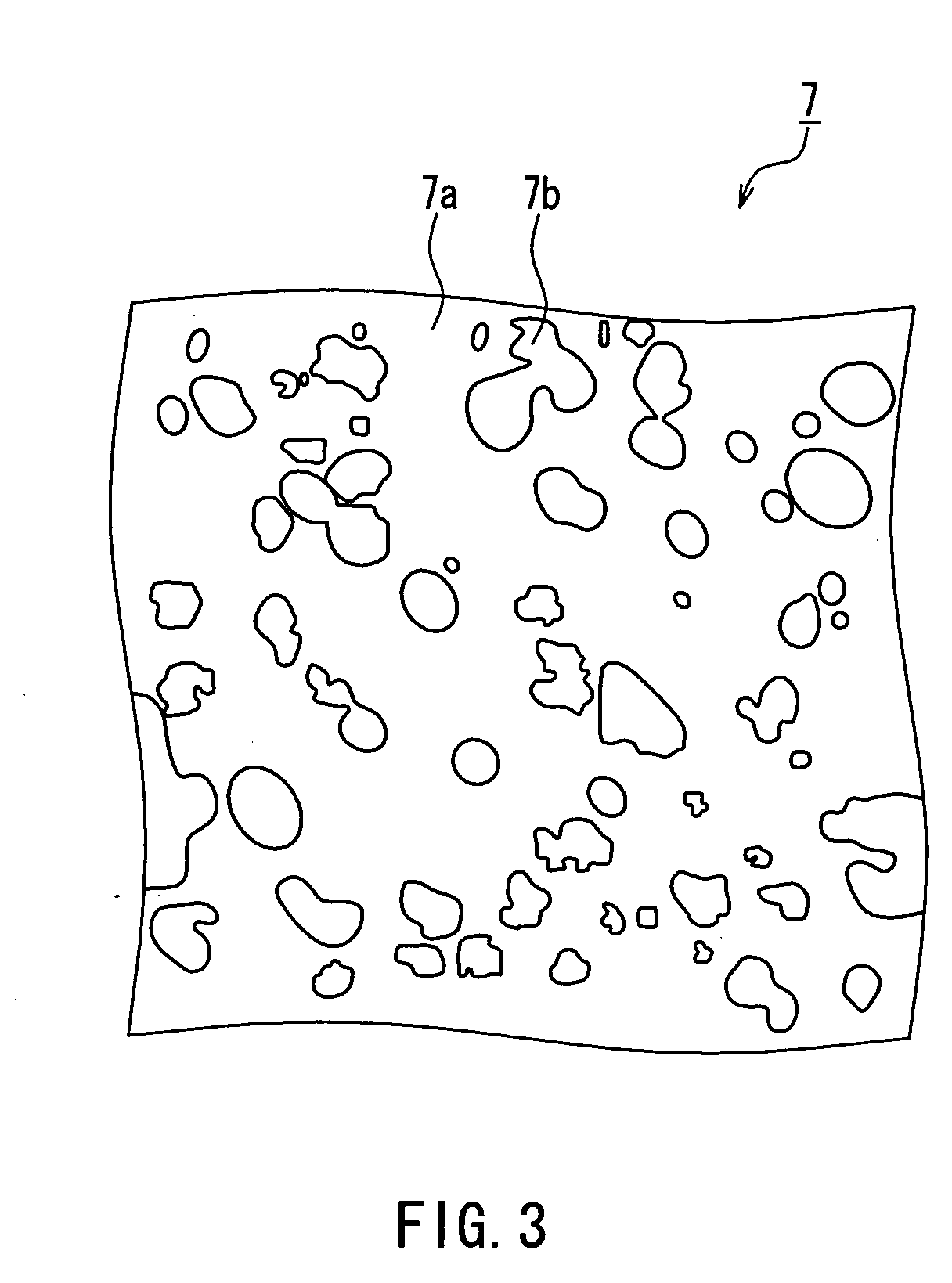Button-type alkaline battery and method of manufacturing the same
- Summary
- Abstract
- Description
- Claims
- Application Information
AI Technical Summary
Benefits of technology
Problems solved by technology
Method used
Image
Examples
embodiment 1
[0022] In Embodiment 1, the description is directed to an example of the method of manufacturing a button-type alkaline battery according to the present invention.
[0023] The method of manufacturing a button-type alkaline battery according to the present embodiment is a method of manufacturing a button-type alkaline battery in which an anode containing an anode active material and an alkaline electrolyte is disposed in a sealed space formed by sealing a cathode housing with an anode sealing member, with a gasket being interposed between the cathode housing and the anode sealing member.
[0024] As shown in FIG. 1, the method of manufacturing a button-type alkaline battery according to the present embodiment includes a process of forming a metal layer 7 (see FIG. 2A) on the anode 3-side surface of an anode sealing member 5 by leaving the anode 3 and the anode sealing member 5 to stand for a predetermined period of time, with the anode 3 and the anode sealing member 5 being disposed so ...
embodiment 2
[0067] In Embodiment 2, the description is directed to a button-type alkaline battery produced by the method of manufacturing a button-type alkaline battery according to Embodiment 1.
[0068] As shown in FIG. 2A, the button-type alkaline battery 1 of the present embodiment is a button-type alkaline battery in which an anode 3 containing an anode active material and an alkaline electrolyte is disposed in a sealed space formed by sealing a cathode housing 4 with an anode sealing member 5, with a gasket 6 being interposed between the cathode housing 4 and the anode sealing member 5.
[0069] The anode 3 contains, for instance, a powdery anode active material and an alkaline electrolyte. The anode active material is made of mercury-free zinc or a mercury-free zinc alloy. The anode 3 contains most of the alkaline electrolyte included in the button-type alkaline battery.
[0070] A cathode 8 includes a press-formed body and an alkaline electrolyte with which the press-formed body has been impr...
example 1
[0086] Production of Alkaline Electrolyte
[0087] A liquid mixture obtained by adding 550 g of sodium hydroxide (with a purity of 96%), 100 g of zinc oxide (with a purity of 99%), and 10 g of indium hydroxide to 340 g of water was stirred for 20 minutes (at a stirring rate of 1500 rpm). Subsequently, 1010 g of water further was added to the liquid mixture, which then was stirred for another 20 minutes (at a stirring rate of 1500 rpm). The liquid mixture thus obtained was allowed to stand still at room temperature (25° C.) for three days. Thereafter, the supernatant liquid was collected from the liquid mixture and thereby indium hydroxide that remained undissolved-was removed. The supernatant liquid then was used as an alkaline electrolyte.
[0088] The indium concentration of the alkaline electrolyte was analyzed using an ICP (an inductive coupling plasma emission analyzer) (“IRIS 1000”, manufactured by Nippon Jarrell-Ash Co., Ltd.). The indium concentration of the alkaline electrolyte...
PUM
| Property | Measurement | Unit |
|---|---|---|
| Fraction | aaaaa | aaaaa |
| Fraction | aaaaa | aaaaa |
| Fraction | aaaaa | aaaaa |
Abstract
Description
Claims
Application Information
 Login to View More
Login to View More - R&D
- Intellectual Property
- Life Sciences
- Materials
- Tech Scout
- Unparalleled Data Quality
- Higher Quality Content
- 60% Fewer Hallucinations
Browse by: Latest US Patents, China's latest patents, Technical Efficacy Thesaurus, Application Domain, Technology Topic, Popular Technical Reports.
© 2025 PatSnap. All rights reserved.Legal|Privacy policy|Modern Slavery Act Transparency Statement|Sitemap|About US| Contact US: help@patsnap.com



